 Your new post is loading...
 Your new post is loading...
The 2016 election exposed a significant crisis for U.S. democracy: the failure of our news media system.
This was an election in which false news was consumed as if true; in which polls were significantly off-base; in which journalists missed the stories both of Trump supporters, who came out in unanticipated numbers, and former Obama voters, who defied predictions to stay home.
The easy response, in the wake of these multiple failures, is to focus on one specific weakness. If only journalists had interviewed more white people in the Rust Belt! If only pollsters had looked at a different data-set! If only Facebook were not so dominant, or fake news sites so plentiful…
Such essays in search of simple answers represent no more than collective wishful thinking. Systemic failures have systemic causes. Repairs to the system may not be enough. We need to put time and resources now into transforming our news media system.
Why did we not know that voters in the Rust Belt were willing to vote for an anti-regulation racist populist, even when doing so might go against their values and self-interests? Likewise, why did news organizations fail to anticipate what appears to be a lower turnout of black voters in North Carolina (with its new voter suppression laws)?
It’s not that journalists in those communities were not doing their job; it’s that there are very few journalists left to tell the stories of those communities....
Guardian digital development editor Joanna Geary answers some questions about GuardianWitness.... ...First up: this was built in two months. The sponsorship pot from EE gave them a budget and time to get the job done, but not necessarily have everything they wanted at launch. She says it's a complete, working system that can be built upon. I suggest the phrase "minimum viable product" to Jo but she suggests that it's a full product - one that will be built on. Do they have aspirations for more integration with social media? Yes, they do. And it's something they're looking at as the system develops. The key part of the development which is invisible to us right now is that the Guardian Witness system is deeply integrated with the Guardian's CMS. Once the content has passed through verification, it's available to the journalists, and they can insert it into a story or liveblog just by inserting an URL, which creates an embedded version of the contribution that links back to the contributor's profile. "The really exciting thing is not what you see now, but what you see when Witness is included in a story," she says. It's a tool to facilitate genuine collaborative working between the journalist and external witnesses. Jo says they'll collaborate with people on the ground, or with expert knowledge, in any way they can - and already do, via phone and other traditional methods. This adds another tool for doing that....
“Twitter does its best work in the first five minutes after a disaster, and its worst in the twelve hours after that.” - @rolldiggity There is a quiet that descends in a newsroom when a big story breaks.... Twitter has often been touted as the “first with news”. From the miniscule to the massive. From Stephen Fry being stuck in a lift, to the Arab Spring rippling across North Africa, it is the instant source of a story, the first gurgle from a tap. The only way to find out what’s really happening, according to some. But I’m beginning to think that so-called truth is losing some of its polish. I follow about 700 people on Twitter. I actually “watch” about three times that amount. I have lists of people I don’t follow. In other words, I can see them, without having to follow them. News people, experts, specialists, comedians, doctors, police officers, bloggers and bohemians. I’ve been on Twitter for more than three years. I like to think I’ve found much of the gold within its mines. When the first tweets about the Boston marathon explosions popped up in my timeline, I went over to my newsroom colleagues. I told them what was happening. And the process began. And I watched Twitter....
... News is irrelevant. Out of the approximately 10,000 news stories you have read in the last 12 months, name one that – because you consumed it – allowed you to make a better decision about a serious matter affecting your life, your career or your business. The point is: the consumption of news is irrelevant to you. But people find it very difficult to recognise what's relevant. It's much easier to recognise what's new. The relevant versus the new is the fundamental battle of the current age. Media organisations want you to believe that news offers you some sort of a competitive advantage. Many fall for that. We get anxious when we're cut off from the flow of news. In reality, news consumption is a competitive disadvantage. The less news you consume, the bigger the advantage you have....
The immersive multimedia documentary, built using Zeega, tells the story of the impact of oil drilling in North Dakota. Todd Melby wants to tell small stories. Hardly an impossible goal for a journalist, but when you’re looking at something as big as the explosion in oil drilling in North Dakota, the scale of the story can get out of hand. In less than five years, the state has tripled its oil production; the Census Bureau estimates western North Dakota (where the oil is) will see its population increase by 50 percent. Big story. So Melby decided to to tell the macro story in a micro way, focusing on the roughnecks who come to North Dakota in search of jobs, the daily experience of working on an drilling rig, and the families whose lives are upended by the oil patch. The result is Rough Ride, a multimedia experience that takes an intimate, documentary-esque approach to telling the story. Split into a series of chapters, Rough Ride divides up the various players and scenes found throughout North Dakota’s rapidly expanding oil country, intertwined with interactive graphics, photography, and first-person video. (It’s not something easy to embed in an article like this; you really do need to go to the site and let it play to get the experience. Go full screen if you can. It’s immersive in a way that a 600-pixel-wide frame can’t be.)...
I have this wall monitor across from my desk that updates the top headlines on Forbes.com every five seconds. I often race up a spiral staircase to the newsroom to congratulate a staff reporter whose post has soared to No.1 To me, it means our journalism has hit home. Then I walk over to our producer desk. They know what I’m going to say: “Make sure you add a gallery to that post — consumers love photos and they drive ad impressions, too.” Next, I’ll peek at four terminals used by a member of our ad sales team — yes, she sits in the newsroom. It’s her job, among many, to optimize advertising campaigns with relevant and spiking content. Everyone in our new newsroom appreciates the imperative to make our premium news product pay off for both the audience and our marketing partners. The business of journalism is changing, requiring every editor and reporter to think and act differently.... [Lewis DVorkin provides a fascinating look inside Forbes. This post is a must-read and should be required reading for all traditional news media executives and journalists too. ~ Jeff]
USA Today is taking advantage of Gannett's custom built CMS system that will let it select and curate content for the growing number of readers who are reading news on mobile devices. Is there a future for a media brand best known for dropping free newspapers at America’s hotels? The brass at USA Today seems to think so and today launched a “next generation” iPad app to carry the brand into the digital future. The app represents a big bet on technology by parent company Gannett which, like other newspaper chains, is on borrowed time as it tries to solve the digital dilemma before its traditional print ad earnings collapse once and for all. The company’s gamble comes in the form of a bespoke content management system that lets editors tailor content specifically for a mobile audience rather than simply slinging content from the USA Today website. In practice, this means shorter and snappier headlines and choosing hard news stories in the morning and then more visual, feature-like fare for later in the day. The move coincides with a mass reader migration to smartphones and tablet devices. “We’re starting to think of these as products that should be actively programmed rather than taking things that were produced for another medium,” said Gannett’s Chief Digital Officer, David Payne.... [This is a fascinating look at how USA Today is trying to shed its newspaper past ~ Jeff]
Dramatic images of hurricane Sandy have made it into the news and have been shared via social media. Farida Vis and Axel Bruns have examined the top 50 most tweeted images and discuss how many of the images shared were actually fake.... [it's a challenging task to verify authenticity of photos, especially in a tragedy Jeff]
|
Yesterday I quoted my old boss at the New Statesman. Today it’s Jon Snow, Channel 4 News presenter and Charlie Beckett who now runs Polis at the London School of Economics and was previously a programme editor at Channel 4 News. Both had interesting things to say about the evolution of news in the networked age. Both were talking heads in the final part of Steve Richards’ Making News series on Radio 4....
Today’s annual report on the State of the News Media shows that new technologies really are pressing journalists to do much more with much less. Last week, we learned that newspaper industry ad revenue was down 7.3 percent this year to its lowest level since 1984 (or 1954, adjusted for inflation). As a result, newsrooms continue to shrink. But The Project For Excellence in Journalism’s report shows us that the needs and demands of the audience are growing and fragmenting. Social media is an important source of news, the report says, but remains smaller and only “supplemental” to other discovery methods like directly visiting a news website, searching the Web or browsing an aggregator....
TV and social media coverage of Boston bombings was repetitive and speculative. The story will unfold in coming days.... The Steve Silva boston.com footage of the Boston marathon finish line explosion is the new World Trade Tower plane implosion is the new Zapruder tape. Another national horror leaves a scar. We know the drill: The moment of violent disruption, the sense of shock oddly mediated by the screen, replayed endlessly — now on every platform. The repeated images become mere images, first shocking then numbing. At some point, perhaps to distance ourselves from the pain, we focus on the conflicting reports of the smallest detail: how many seconds elapsed between the first explosion and the second? First we heard “a few.” Then a more definitive “13 seconds.” Then “between 10 and 20.” Every network had a different count. At some point we started counting ourselves, timing the moments with every replay. Could’ve been 13, but the speed of sound is faster than the speed of video, isn’t it? We were told that cell service was disrupted so as not to set off additional bombs. That report was then retracted. We heard the JFK Library had a third bomb. That report later knocked down. A suspect was held at Brigham and Women’s Hospital. Authorities later said not so. More unexploded bombs? Maybe, maybe not. Information moves faster than knowledge and still the finish-line explosion footage rolls....
When a helicopter crashed in a densely populated part of London around 8am today, next to one of the busiest trainlines in Europe and a large bus station, the news was always going to be broken, within seconds, by members of the public on Twitter, armed with camera phones.
Twitter user Craig Jenner was one of the first to put a picture on Twitter which was shared far and wide.
What happened next is indicative of the way the media are increasingly playing catch-up on such stories, moving from reporting to aggregating (or curating, if you must) - images, eye-witness accounts and videos. Journalists were asking to use the picture with a credit and were trying to get Jenner on the phone...
"The new muckraking isn't the effect of new media alone...Yet buried within the infrastructures of communicative abundance are technical features that enable muckrakers to do their work of publicly scrutinising power, much more efficiently and effectively... Who or what drives the new muckraking? The temptations and abuses of power by oligarchs, certainly. The criminal obscenities, hypocrisies and political stupidities of those responsible for the deep crisis of parliamentary democracy in Greece and the wider Atlantic region, no doubt. The decline of parties and representative politics and strengthening democratic sensibilities against arbitrary power also play their part. But of critical importance is the advent of communicative abundance. Just as the old muckrakers took advantage of advertising-driven mass production and circulation of newspapers, so the new muckrakers are learning fast how to use digital networks for political ends....
I’ll be the bearer of bad news: the press that most publicists chase for clients isn’t really worth anything. There’s a good chance no one will actually see it. Except the client, that is. The flack will make damn sure of that. But other than that, the assumptions of publicists, clients and journalists—that being featured matters, that being written about will drive awareness or sales or public image—are a collective chimera. The widespread belief is that the media has “reach.” Trust me, they don’t. Not anymore. It’s become almost pathetic. It hit me the other day when I snagged a profile for a client on a well-known website. The day it ran, they editor sent me an email: “Hey, we hate to ask but could you guys be sure to tweet and share the article for us?”... [This is a fascinating article and media irony ~ Jeff]
The war for the living room will ultimately be won not by gadget manufacturers, but by content companies — the people who make and distribute TV itself. But it’s a two-way street: the... ...internet is changing how even the largest producers of television think about their products. Vivian Schiller has been on the front lines of change for years. She was the first general manager of what has become the Investigation Discovery channel, then the senior vice president of NYTimes.com, and then the CEO of NPR. Now she’s the Chief Digital Officer for NBC News, overseeing the company’s online efforts — including the newly-acquired MSNBC.com, which is now simply NBCnews.com. We spoke about the future of distribution, how Twitter and Facebook are changing NBC’s audience, and the challenges of developing real-time news across different platforms and mediums.... [Good read on media trends- ~ Jeff]
Imagine doing your journalism without any social media. Imagine your newsroom is actually restricted by law in what social media it can use. That was the situation for Austrian radio correspondent Nadja Hahn who has spent the last month at Polis, LSE researching the value of social media for public service journalism. Here is her valedictory post. My stay in London is coming to an end. In the past five weeks I visited the BBC, Channel4, ITV, CNN and spoke to lots of journalists, experts and academics. Thanks to all for sharing their thoughts with me. I had my own personal social media crash course. So, going home now I am thinking about how I could be applying all that knowledge to my own reporting to make my stories better, provide more public value, reach a larger audience and get fresh ideas. I want to share my thoughts with you, as some of you might still be struggling to see the value social media could bring to a story. Like I was.... [Lots of lessons and insight ~ Jeff]
|



 Your new post is loading...
Your new post is loading...

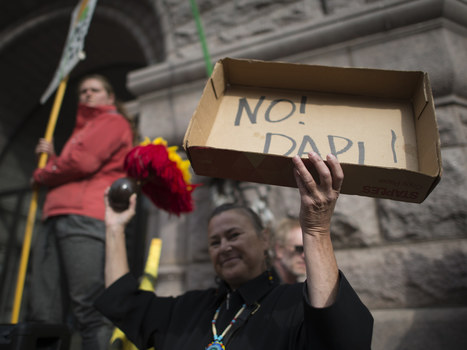

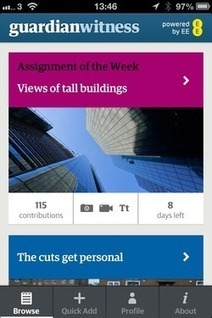


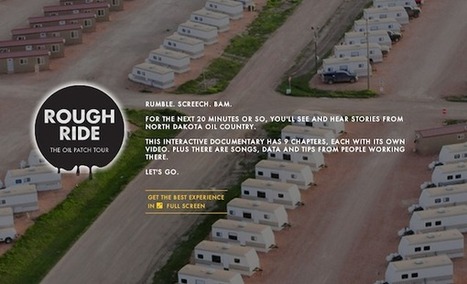


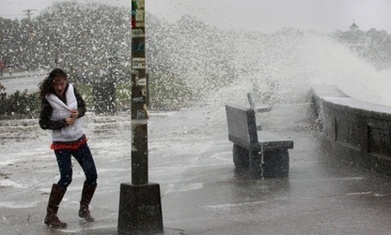

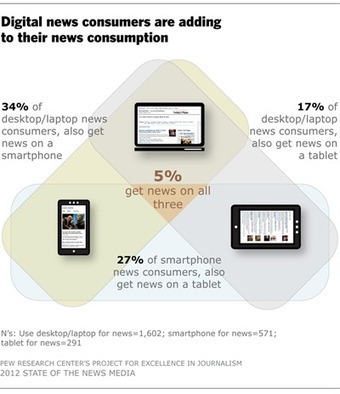




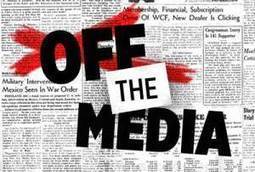







I'm just not convinced that more journalists would solve the problem. The problem is systemic – we don't need journalists when we have direct access through social media and everyone is an expert, a spokesperson, a performer, an influencer and most definitely a surrogate.
We do need to rethink media for the future. CNN for example, is right back to its talking heads and experts and pundits formula and presentation. While it was compelling during the election, it's already wearing out while its reporters and roundtables of surrogates and "experts" flail around trying to figure out how to bring us news that matters.where much of the poor for it as Jo Ellen Green Kaiser says in this excellent post.